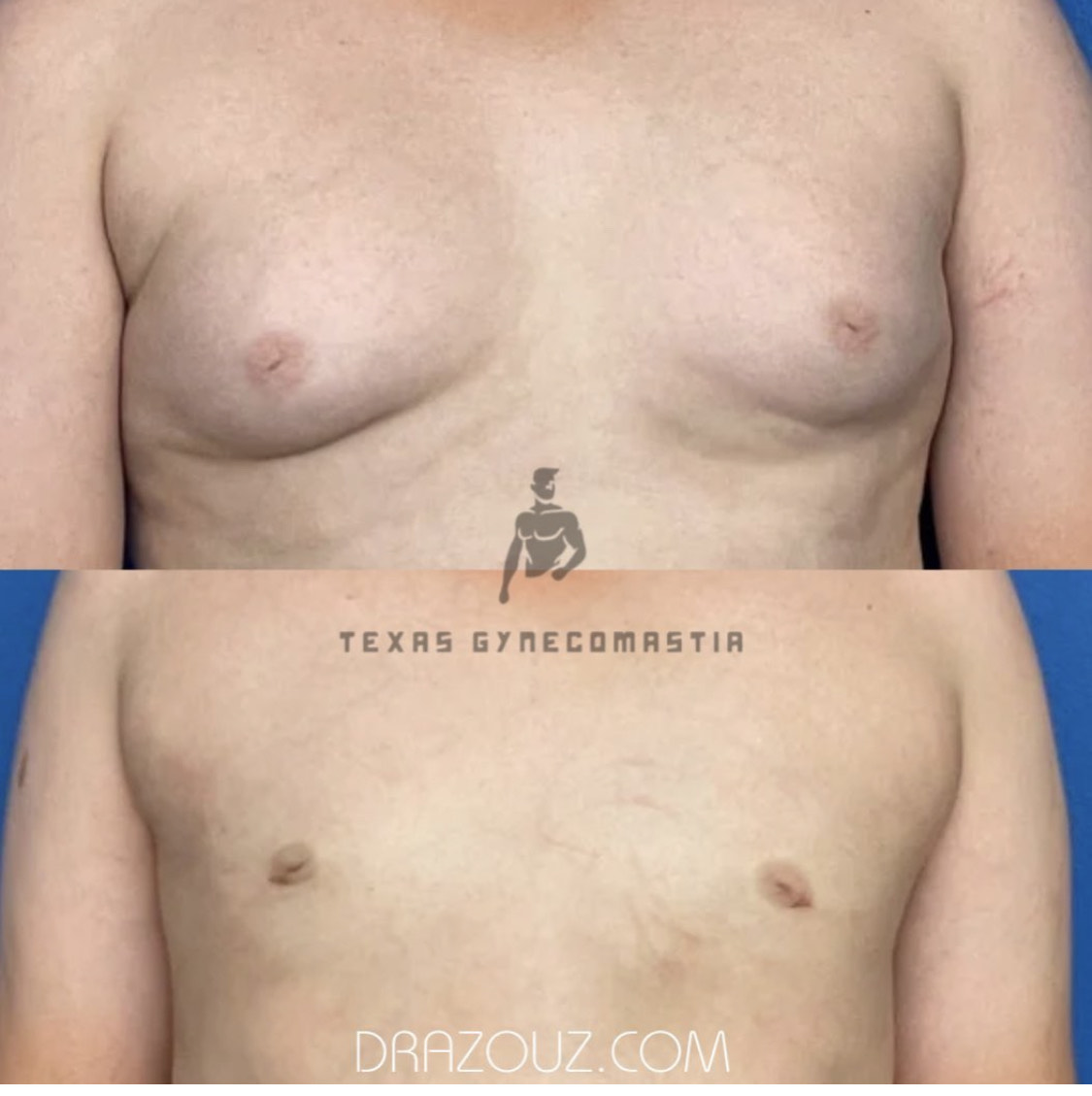Gynecomastia in Teens: Causes, Symptoms, and Treatment-Dr. Azouz
 Although breasts do not develop in males as they do for females, most men are born with a small amount of breast tissue. A male’s body makes the testosterone hormone which guides his sexual growth and development with puberty. However, males also produce the female sexual growth hormone, estrogen. Endocrine studies have demonstrated a hormonal imbalance with an increase in estrogen, leading to swelling and hypertrophy of male breast tissue. Almost 50 percent of adolescent boys develop gynecomastia to some degree and some will develop permanent gynecomastia presenting as a female appearing breast or as puffy nipples. Some men will also present with lipodystrophy, which is an abnormal distribution of fat overlying the pectoralis muscles. Many men have a combination of both abnormal fat distribution and gynecomastia (breast tissue) appearing to be female breasts.
Although breasts do not develop in males as they do for females, most men are born with a small amount of breast tissue. A male’s body makes the testosterone hormone which guides his sexual growth and development with puberty. However, males also produce the female sexual growth hormone, estrogen. Endocrine studies have demonstrated a hormonal imbalance with an increase in estrogen, leading to swelling and hypertrophy of male breast tissue. Almost 50 percent of adolescent boys develop gynecomastia to some degree and some will develop permanent gynecomastia presenting as a female appearing breast or as puffy nipples. Some men will also present with lipodystrophy, which is an abnormal distribution of fat overlying the pectoralis muscles. Many men have a combination of both abnormal fat distribution and gynecomastia (breast tissue) appearing to be female breasts.
Gynecomastia in teens and young adults
With puberty comes a number of changes to the body. The appearance of facial hair and deepening of the voice are part of healthy male development. Sometimes, teenage boys may experience another change that comes in the form of breast tissue enlargement which is distressing and cause self-consciousness with tight-fitting clothing or when shirtless.
What causes gynecomastia in teens?
Several factors can cause gynecomastia in men and teens; however, the exact cause can be difficult to determine. Most cases of gynecomastia are no fault of the patient and run in families being genetic. Some factors that are felt to contribute to gynecomastia are as follows:
- An injury to the testicles which make testosterone or disease affecting it.
- Problems of the liver, thyroid, or kidneys
- Obesity leads to an increase in estrogen.
- Certain medications like those for depression, cancer, ulcers, or heart disease.
- Drugs like marijuana or steroids.
- Dietary or herbal supplements

Gynecomastia in teens: symptoms and treatment
Gynecomastia can initially present as a lump of fatty tissue under the nipple. The swelling in the breasts may be even or uneven. Most patients have some asymmetry between the two breasts.
Dr. Azouz evaluates each teen patient with a history and physical exam. When indicated, Dr. Azouz can contour the chest with liposuction and removal of gynecomastia and fatty tissue. Dr. Azouz routinely camouflages small incisions around the areola and does not use drains. Liposuction and gynecomastia removal are routinely performed as day surgery, and many patients report experiencing little pain after surgery. Dr. Azouz will guide aftercare and advise patients on when to return to light and heavy physical activity.
Schedule a consultation with Dr. Azouz
Dallas Top Gynecomastia Surgeon Dr. Azouz will evaluate the teen patient and will advise the best treatment possible. Schedule an appointment with Dr. Azouz at Azouz Plastic and Cosmetic Surgery in Dallas, TX. Call (972) 702-8888 or request an appointment online.
Posted on behalf of
